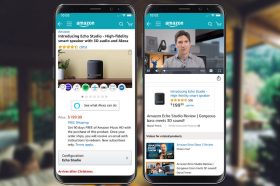Resources - Blog
Preventing Abandoned Shopping Carts on Amazon

Stay on top of the latest e-commerce and marketplace trends.
Nearly 80% of all e-commerce shopping carts are abandoned.
Shopping cart abandonment — which refers to prospective customers adding products to their cart but exiting the website before making a purchase — is tremendously common, particularly as more retailers and brands establish an online presence. On Amazon, for example, customers have the autonomy to switch back and forth between various brands until they find the right one that fits their price requirements and any additional, bespoke product specifications they are seeking.
Some of the reasons why online shoppers may abandon their cart prior to checkout include high shipping costs, they are merely browsing with no purchase intent, they decide to purchase the product in-store, they experience technical issues, or the checkout process is too complex. Here, we have compiled several proactive ways you can reduce your Amazon business’s cart abandonment rate or retarget shoppers appropriately if they engage with your brand but do not convert.
Navigating Cart Abandonment
1. Offer one- or two-day shipping on your entire catalog.
Amazon has established an industry standard for fast and free shipping on e-commerce orders. In order to tap into the high-value Prime audience, which consists of more than 100 million people in the U.S. alone, your entire catalog should be eligible for Prime shipping.
To qualify for one-day delivery, you must have sold on Amazon for at least the last 90 days and maintain specific performance metrics such as for on-time delivery, cancellation rate, and order count. If your products do not offer the free shipping that comes with Prime products, there is a high likelihood that the customer will abandon your product for that of a competitor who does offer Prime shipping.
2. Make sure your product listings are optimized.
Customers need to be able to find your products before they can buy them, so your product detail pages need to be optimized with SEO-rich product descriptions, titles, and search terms to have your products rank organically. According to Amazon, factors such as the degree of text match, price, availability, selection, and sales history help determine where your product appears in a customer’s search results.
By ensuring your on-page content is relevant, complete, easy to digest, and engaging, you can help bolster your product’s visibility and sales. If shoppers have any form of hesitation or confusion upon reading your product’s specs, bullet points, or features, they may abandon their cart.
Provide as much insightful information about the product as possible, putting yourself in the shoppers’ position and answering any potential questions you think they may want to know. Include “snackable” information about product uses, unique benefits and features, and any other social issues your brand takes a stand on.
3. Establish a dynamic pricing strategy so shoppers do not purchase from a competitor.
Price remains the most significant factor of purchase influence on Amazon, with 82% of consumers in agreement that price is a very important part of product selection. Other factors that include product selection are low shipping costs, positive product reviews, flexible return policies, fast shipping time, and Prime eligibility.
In order to ensure that your price points on Amazon are competitive and appealing to consumers, it is important that you have a SKU-specific pricing strategy for your entire catalog. By remaining current with and adapting to changing market dynamics, you will avoid simply shrinking your prices to win the Buy Box or generate demand.
With an AI-backed dynamic pricing strategy, you will be able to ensure that your products are being sold at the optimal price between revenue and profitability. You also have the ability to receive insights into where your competitors may be taking sales share away from you and can price appropriately as a result.
4. Experiment with remarketing through Amazon’s Demand-Side Platform (DSP).
Amazon DSP allows you to reach Amazon consumers via desktop, mobile and over-the-top (OTT), and Amazon-owned sites and apps like IMDb. Through contextual targeting, programmatic advertising through DSP reaches audiences actively viewing your products relevant to your brand and shows your ad at the optimal time to help drive sales.
With DSP, you can leverage three types of remarketing to target shoppers who may have shown interest in your brand but never converted. With product remarketing, you can target consumers who viewed your promoted items but never purchased them. With brand halo remarketing, you can target consumers who viewed other products from your brand. Finally, with similar product remarketing, you can target consumers who are browsing products similar to yours.
With all of these tactics, you can effectively engage with audiences who have a clear interest in your brand or the products you offer and can proactively work to drive conversion and avoid any repeat cart abandonment.
Final Thoughts
When aiming to reduce cart abandonment, it is critical to keep the prospective customer front of mind. Have you answered all potential questions about the product? Are your product listings clear and inclusive of relevant details? Are all of your SKUs eligible for fast and free Prime shipping? Do you have a plan in place to attract consumers if they do abandon their cart?
Remaining compliant with Amazon’s Terms of Service and actively working to maintain a healthy account and strong performance metrics will not only help improve your customer experiences but also lead to incremental traffic and sales.
Learn what Feedvisor can do for your business.
When you partner with Feedvisor, you automatically receive access to our true, AI-driven technology and hands-on team of e-commerce experts. Contact one of our team members today to learn more about our end-to-end solution for brands and large sellers on Amazon, Walmart, and e-marketplaces.



